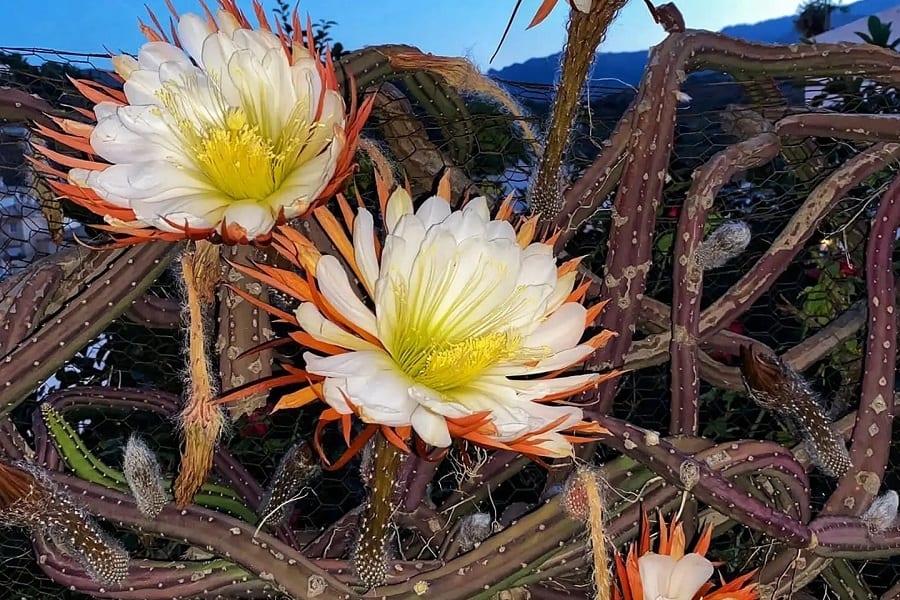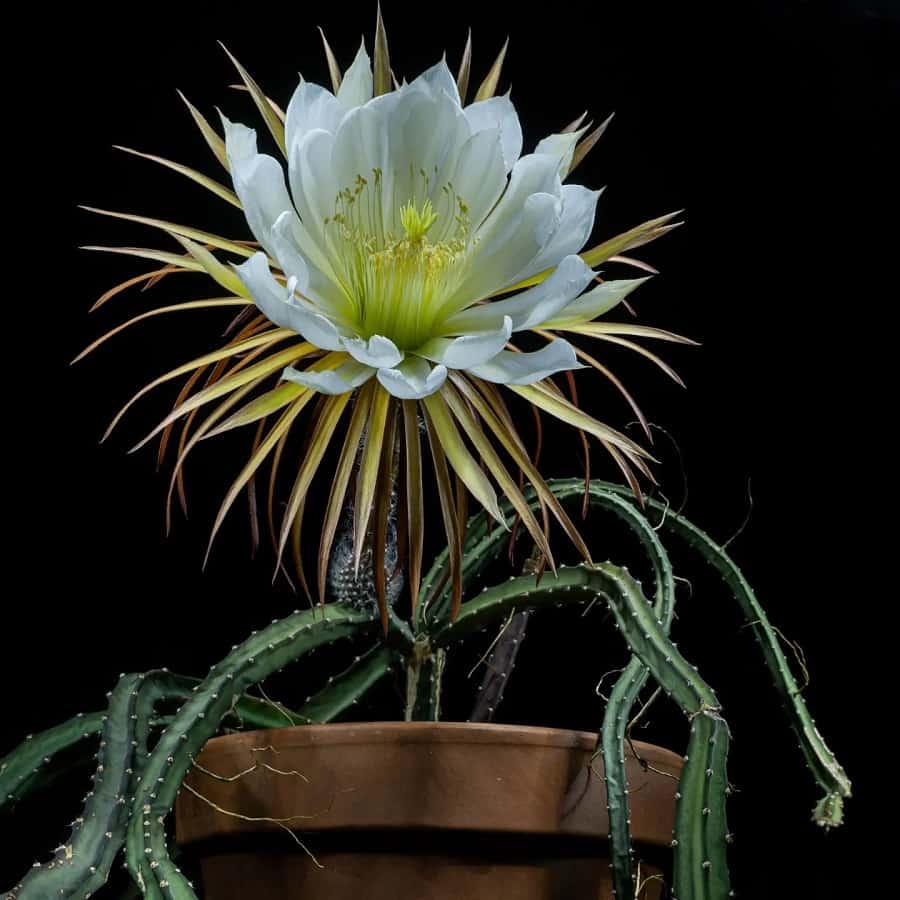Selenicereus grandiflorus: Characteristics and Care
Did you know that there is a fascinating plant called Selenicereus grandiflorus, also known as the ‘queen of the night’? This plant is an epiphyte, which means it grows on another plant or tree without taking water or nutrients from it. Instead, it absorbs moisture from the air.
One of the most striking features of this plant is its extensive network of branches covered with yellow spines. But what makes it even more enchanting are its flowers that bloom at night. These flowers not only have a lovely fragrance reminiscent of vanilla but also come in a variety of colors, including white, yellow, pink, and orange.
In this blog, we will delve deeper into the intriguing world of Selenicereus grandiflorus and explore its unique characteristics. Get ready to be amazed by the beauty and wonder of the ‘queen of the night’!

Related Post:
31 Types of Selenicereus With Pictures
Contents
Selenicereus grandiflorus Care
Taking care of Selenicereus grandiflorus is all about finding the right balance with water, light, and nutrition. This plant doesn’t need to be watered more than once a week, especially in temperate or humid climates.
If you keep the plant indoors, make sure to place it near a window where it can get bright, indirect sunlight. This light is crucial for the plant to carry out photosynthesis and get the food and nutrients it needs.
Since Selenicereus grandiflorus doesn’t require a lot of water, it’s important to be cautious when using strong commercial fertilizers. These fertilizers can’t be diluted easily, and using them without caution can harm the plant.
In addition to that, maintain a balanced environment for the plant. Provide plenty of natural light, fresh air, and just the right amount of water. As long as you’re doing the basics right, caring for Selenicereus grandiflorus won’t require much management.

Propagating Selenicereus grandiflorus
The best way to propagate Selenicereus grandiflorus is through stem cuttings. If you already have a parent plant, you can take multiple cuttings to propagate.
Plant these cuttings in a shallow pot with a drainage hole. Regular soil won’t do; you’ll need a specific soil mix for cacti that drains water effectively. Water the soil until it’s damp, but not wet.
Next, allow the cuttings to take root and grow. Avoid overwatering them. Just like other cacti, Selenicereus grandiflorus only needs to be watered once a week. Also, make sure the plant gets the right amount of light, avoiding intense afternoon heat that could harm the plant.
Frequently Asked Questions
Does Selenicereus grandiflorus like humidity?
Selenicereus grandiflorus plants are rainforest cacti, not desert plants. This means they prefer some humidity. If the weather is too dry, the plant may not thrive. The soil should be damp enough to hold moisture but still drain effectively to prevent water accumulation.

Does Selenicereus grandiflorus like the sun?
Cacti, in general, prefer the morning sun rather than the intense afternoon heat. Selenicereus grandiflorus needs plenty of natural light, but it’s best if the light is filtered to protect the plant from scorching heat and dehydration. So, when caring for Selenicereus grandiflorus, find a spot that gets plenty of sun before noon but is also partially shaded.
How long does it take for Selenicereus grandiflorus to bloom?
If you propagate the cactus from a cutting, it can take up to three years to start blooming flowers. The cutting needs time to grow branches and develop into a new plant. Once it begins to flower, expect annual blooms during springtime that may last until the beginning of summer.
